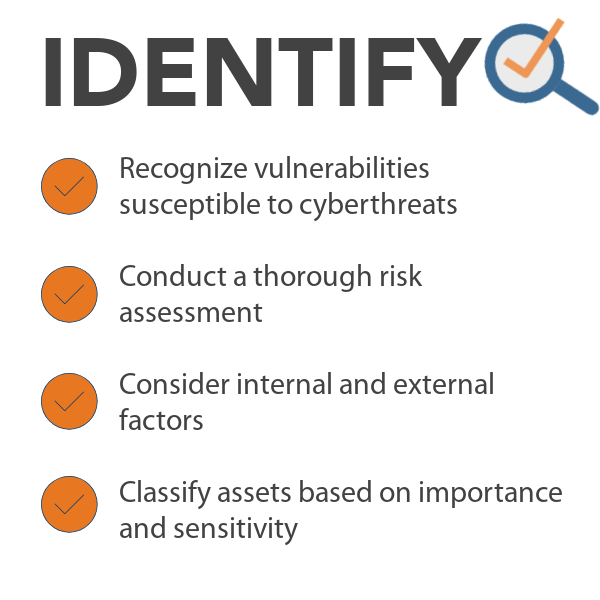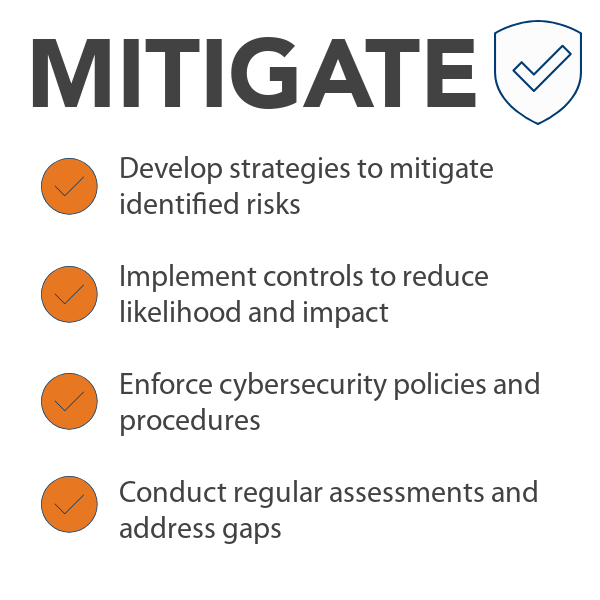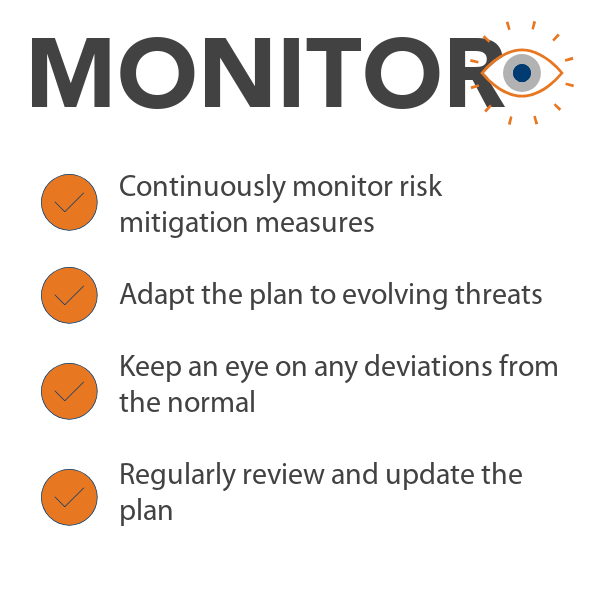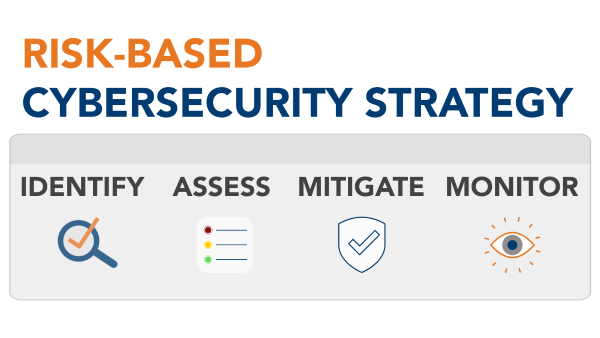We speak often about cybersecurity risk.
WHY?
The cybersecurity landscape is dynamic. Attackers change their tactics to adapt to new security controls and new vulnerabilities. Acknowledging this reality reinforces the need for ongoing vigilance and adaptability in your cybersecurity approach. Eliminating cybersecurity risk is not possible.
So, is cybersecurity hopeless?
Not at all. There are powerful strategies that can help. Acknowledging this reality reinforces the need for ongoing vigilance and adaptability in your cybersecurity approach. Addressing the most critical security gaps, threats and vulnerabilities gives you a great return on your investment.
Start with a comprehensive cyber risk management plan. Give your strategy some strategic thought!
Traditional approaches to addressing issues not only focus on technology, but often focus on adding a piece of software to address a particular problem. “We have too much spam, let’s get this spam filtering software”. This narrow or reactive approach can waste money and create a disconnect across your technology solutions.
You will get better outcomes if you put in the time to organize, prioritize, and strategize. Take a comprehensive approach to address your cybersecurity risks.
Risk-Based Cybersecurity Strategy
Get organized by doing a Security Risk Assessment. This gives you information about your network, where data is located, where weaknesses exist. The goal is to proactively identify and managing threats.
Once you have the assessment of your network security, prioritize the risks based on impact and likelihood of occurring. You can concentrate your investments on addressing the most critical risks.
Document your strategy so everyone is onboard and can focus efforts and resources on the most critical risks.
First, determine your risk tolerance.
This will serve as a guiding principle that influences decision making and provides a framework for achieving your business objectives.
Not all cybersecurity risks to your business can be eliminated. So, let’s determine your tolerance to risks.
Financial Resilience
What is your business capacity to absorb losses? Do you have a financial buffer to absorb losses without jeopardizing core operations and recover from security incidents without severe disruption?
Slow and Steady vs Fast and Furious
Your risk tolerance should align with your business strategic objectives and long-term goals. Although this one is not clear cut.
If your long-term goal is sustainability, customer retention, cost control, being strategic in your cybersecurity plan is most cost-effective. You do not want to lose money to Cyber criminals or lose your reputation to a data breach.
If your long-term goal is aggressive and adaptable, you will most likely take more risks, but these companies often view technology as a competitive edge.
Compliance and Regulatory Considerations
You need to understand the legal and regulatory landscape impacting your business operations. Ensure your strategy adheres to these standards to reduce the likelihood of legal consequences.
Customer and Stakeholders
What do your customers and stakeholders expect from your business security? You can maintain their trust and confidence by demonstrating you prioritize their interests and data security. This is often an overlooked part of a cybersecurity risk strategy.

Next, Understand your Risks.
List out potential threats, their impact on your business and the likelihood of it happening. Perhaps you have done this for physical threats. Like, if your business is on the coast, the likelihood of a hurricane is greater, and the impact might be devastating.
Although you can do this process yourself, it’s often worth the investment to partner with an IT security service provider to perform a Security Risk Assessment. This should ensure your approach is comprehensive.
Address the top threats first since that will have the greatest impact. This allows you to allocate your resources more effectively.



Make Sure to Take a Holistic View
We often focus on technology to fight cyber threats, but that is only a part of the solution. Recognize the significance of PEOPLE, PROCESSES and TECHNOLGY to create a holistic cybersecurity risk management plan. Your business success is not due to one thing, neither is your business security.
While technology is crucial, human behavior can be a significant source of vulnerability. Your cybersecurity risk strategy must include your people and processes. Addressing employee awareness, training, and building a culture of security is essential for a holistic cybersecurity strategy.
Then, Allocate Resources to Mitigate Cybersecurity Risks
Address the top priority items to make the biggest impact on your business security. This will also maximize your investment of money, time, and people.
Include every employee in your cybersecurity risk strategy. Clarify their role and responsibilities in maintaining business security.

Lastly, Do Not Stop
You must continually monitor and adapt to evolving threats. Cyber threats evolve, and what worked yesterday may not be effective tomorrow. Regularly reviewing and updating your cybersecurity strategy ensures its relevance and effectiveness over time.
Safeguarding your business is critical for the growth and survival of your business. You cannot leave your business security to chance – you will take a hit.

Do You Feel You Need to Boost Security ASAP?
We have a suggested place to start.
We have identified the Top Three ROI Solutions for Small Businesses.
Consider a Partner
The AME Group has a well-developed security division that has worked to make advanced security more affordable to the small business by addressing the top threats.
Our managed security services and compliance assistance make it a lot easier to stay on track, achieve and maintain regulatory compliance.

